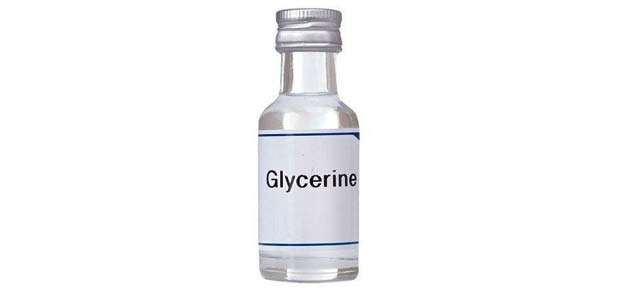Glycerin is a natural by-product of the soap manufacturing process. It is a humectant that means it attracts moisture to your skin. While commercial manufacturers remove the glycerin for its uses in more profitable expensive lotions and creams, handcrafted soap generally retains glycerin in them. Glycerin is also highly hygroscopic that means it absorbs water from air. Because of this hygroscopic property, pure, 100 % glycerin when placed on the tongue may raise a blister, as it is dehydrating. However when it is diluted with water, it soften your skin.
Highly glycerinated clear soaps generally contain about 15 to 20 percent pure glycerin. Known as "melt and pour soaps", these soaps melt at about 160 degrees Fahrenheit, and solidify fairly quickly. Due to their high glycerin content, these soaps are very moisturizing to the skin. However the high glycerin content also means that these soaps will dissolve more quickly in water than soaps with less glycerin content.
Where does glycerin come from?
Until 1889, people did not know how to recover glycerin from the soap
manufacturing process and so glycerin required for other applications was
commercially produced from the candle making industry. In 1889, a feasible
method to separate glycerin from the soap was discovered. As the prime use
of glycerin was to make nitroglycerin that was used to make dynamite, soap
making business became a more profitable one.
The technique of separating glycerin from the soap is fairly complicated process. In the simplest terms, soap is made using fat and lye. The fats already contain glycerin, which is due to their chemical makeup. When the fats and lye react, soap is produced, and the glycerin is left out as a byproduct. However, while it is chemically separated, it is still blended into the soap mix.
While a cold process soap manufacturer would usually pour into the molds at this stage, a commercial soap manufacturer will add salt. The salt makes the soap to curdle and float to the top. After creaming off the soap, glycerin is left off. Then the pure glycerin is separated out by distillation. Finally, in the end, glycerin is de-colorized by filtering it through alcohol, or by using some other bleaching techniques.

A colorless, odorless and viscous liquid, glycerin is a chemical compound with formula HOCH2CH(OH)CH2OH. This colorless, odorless, viscous liquid is widely used in pharmaceutical formulations. Sweet in taste, glycerin is low of toxicity and has 3 hydrophilic alcoholic hydroxyl groups, which are responsible for its solubility in water and its hygroscopic characteristic. The chemical has a surface tension of 64.00 N/m at 20 °C and has a temperature coefficient of -0.0598 mN/(m K).
An important thing to know about glycerin is that it should be placed in a slotted soap dish to ensure proper drainage. In the case, there is too much water on the soap it will start to gel.
Applications
Besides making nitroglycerin, glycerin is also used in various other
processes, including -
Benefits of Glycerin in Skincare
Glycerin is a humectant, which means it promotes the retention of moisture.
It has no drying characteristics and hence leaves the skin smooth and silky.
It has found to be really effective and god for elbows, heels, tender skin
and children's skin.

If you have decided to make soap at home, you will need soap making supplies in the form of raw materials, soap making equipment & tools ...
Read More
Someone has rightly said that clothes are not just clothes. They form an integral part of a person's personality and tell a lot about their nature and...
Read MoreCleansing products play an important role in the daily lives of people.
Both soaps and detergents are cleansing products that we frequently use in our
Soap is designed as a product to be used once and then flushed down the drain...